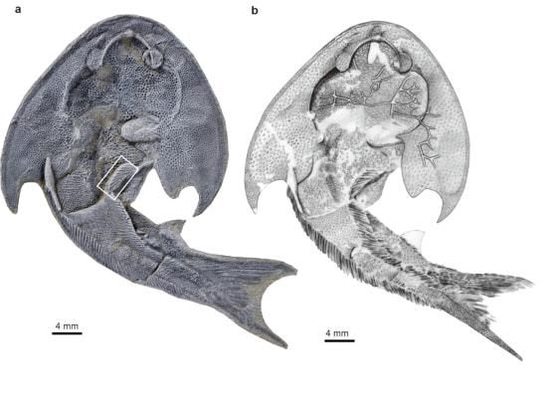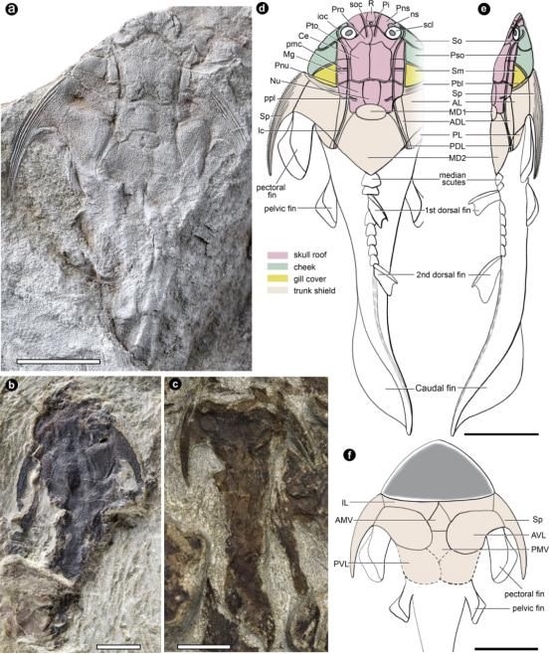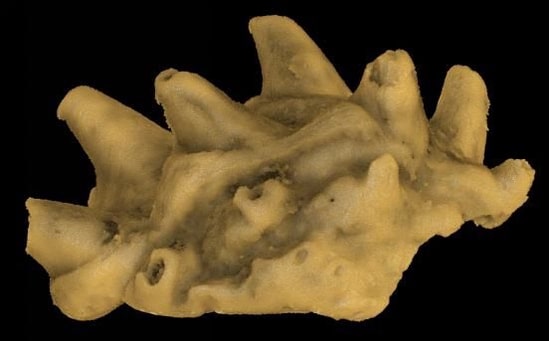“Nature” magazine published the research results of the Chinese scientific research team.
Researchers have discovered the world’s oldest jaw-like tooth fossils in Chongqing and Guizhou fossil banks. Among them, the miracle Xiushan fish is the oldest jawed species discovered so far, pushing the fossil record of the complete jawed species forward by 11 million years.
Crested sticklebacks prove that sharks evolved from “armored” ancestors. Researchers said that the discovery of a group of ancient fish fossils such as the Miracle Xiushan fish is the key evidence that fish landed and eventually evolved into humans.
According to relevant researchers from the Institute of Vertebrate Paleontology and Paleoanthropology, Chinese Academy of Sciences, including humans, 99.8% of the extant vertebrates on earth have jaws, that is, the upper jaw and jaw. This class of vertebrates is collectively referred to as jawed vertebrates or jaws. The emergence and rise of jaws is considered to be one of the most critical jumps in the evolution of vertebrates from “fish to man”. Many important organs and body configurations of humans can be traced back to the beginning of the evolution of jaws.
However, exactly when, where, and how this jump occurred has remained a mystery, requiring paleontological evidence to answer. It is understood that the most complete jaw fossils were formed in the late Silurian about 425 million years ago, and the origin of jaws inferred by the molecular clock is no later than the late Ordovician 450 million years ago, so , There was a huge gap in the early evolution of jaws that lasted at least 30 million years and spanned the entire Silurian period. Vertebrate paleontology giant Alfred Rommel once called it “a major and persistent gap in the history of paleontology.”
Among them, the “Chongqing Extraordinary Buried Fossil Repository” dated to about 436 million years ago in the Landovreich Trechi period. It is currently the only exceptionally buried fossil repository in the world that preserves complete jaw fossils from the early Silurian period. Dawn of Fish”. The ancient fish fossils found in the Chongqing Special Buried Fossil Bank are not only numerous and complete, but also very complete and beautifully preserved. We can get a glimpse of the vertebrates in the early Silurian, especially the jaws.
For example, the jawless armoured fish, the Tujia fish, provides key fossil evidence for the origin of paired appendages in vertebrates; the jawed stickleback is the earliest well-preserved cartilaginous fish known to date, confirming that sharks originated from the The ancestors of armor and armor evolved. Another jawed fish, Miracle Xiushan, combines the characteristics of multiple placodes, providing valuable information for exploring the origin of the main groups at the root of the jawed tree of life and the evolution of vertebrate skulls.



The age of the “Guizhou Shiqian Fossil Bank” is about 439 million years ago, the last Elonian period of the Landovileian (early Silurian period). The “Guizhou Shiqian Fossil Bank” contains a large number of well-preserved jaw-like microfossils. For example, the tooth spiral of the double-column-toothed fish and the spines of the new plastic Fanjingshan fish have also settled the long-term debate over the classification of Ordovician and Silurian fish scales and spines.


It is understood that the discovery of the “Chongqing Special Buried Fossil Bank” and the “Guizhou Shiqian Fossil Bank” is the first time in the history of paleontology that the Silurian fish groups, especially the jaws, have been displayed on a large scale, revealing the rise of the early jaws. Process: 440 million years ago at the latest, the major groups of jaws were already thriving in southern China; by the late Silurian, more diverse and larger jawed species appeared and began to spread around the world, opening up fish The process of landing and eventually evolving into a human.
During the research process, the team of Academician Zhu Min also applied new technologies and new methods such as high-precision CT, big data analysis of traits, and fluid dynamics simulation to study the fossils of the “Chongqing Specially Buried Fossil Repository” and the “Guizhou Shiqian Fossil Reservoir”. Show the world for the first time the earliest jaw-like body structure and anatomical information, such as the teeth, head, body, and even fins of the earliest jaws, and traced back many human-related anatomical structures to 440 million. The ancient fish of the past year filled the most missing link in the evolutionary history of “from fish to man”, rewrote all aspects of the early evolutionary history of jawed vertebrates, and updated the traditional cognition of the origin and rise of jawed species. Further consolidate the evolutionary path of “from fish to man”.



GIPHY App Key not set. Please check settings